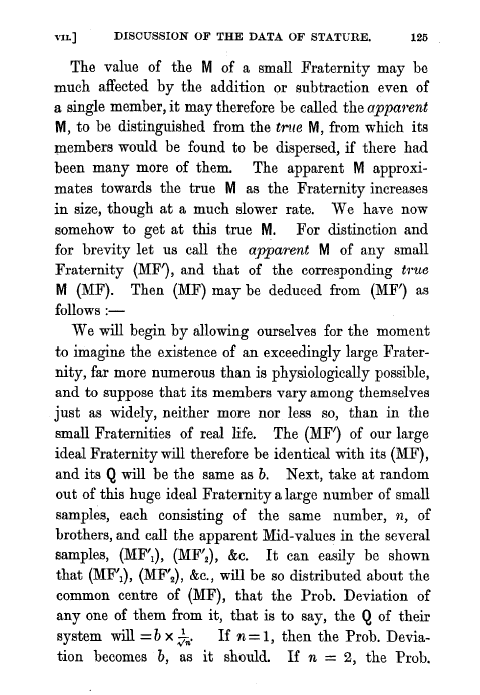VII. DISCUSSION OF THE DATA OF STATURE. 125
The value of the M of a small Fraternity may be much affected by the addition or subtraction even of a single member, it may therefore be called the apparent M, to be distinguished from the true M, from which its members would be found to be dispersed, if there had been many more of them. The apparent M approximates towards the true M as the Fraternity increases in size, though at a much slower rate. We have now somehow to get at this true M. For distinction and for brevity let us call the apparent M of any small Fraternity (MF'), and that of the corresponding true M (MF). Then (MF) may be deduced from (MF') as follows :
We will begin by allowing ourselves for the moment to imagine the existence of an exceedingly large Fraternity, far more numerous than is physiologically possible, and to suppose that its members vary among themselves just as widely, neither more nor less so, than in the small Fraternities of real life. The (MF') of our large ideal Fraternity will therefore be identical with its (MF), and its Q will be the same as b. Next, take at random out of this huge ideal Fraternity a large number of small samples, each consisting of the same number, n, of brothers, and call the apparent Mid-values in the several samples, (MF'1), (MF'2), &c. It can easily be shown that (MF'1), (MF'2), &c., will be so distributed about the common centre of (MF), that the Prob. Deviation of any one of them from it, that is to say, the Q of their system will = b x ~;n. If n =1, then the Prob. Deviation becomes b, as it should. If n = 2, the Prob.

